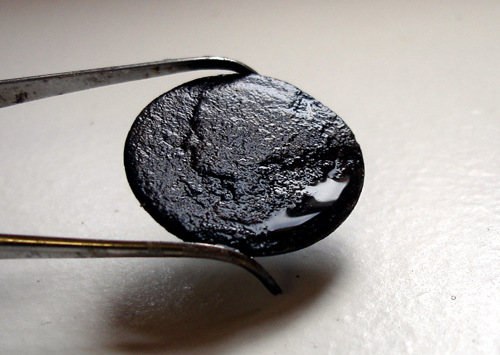
The copper coin which was found by a volunteer when sorting through dredge spoil from this summer’s excavations on the late 1700s Storm Wreck. And that wasn’t the day’s only exciting discovery . . .
Yesterday started out like any other day. I had a manager’s meeting to attend, the other LAMPers were busy with various projects, and several volunteers were bustling about the office with projects of their own. Before I left the barracks for my meeting, I briefly chatted with a volunteer, Karen, who for her first time was going to sort through our dredge spoil. “Now, you’ll probably find some lead shot from the shipwreck,” I told her. “You may not find too much else. This can sometimes be a thankless, tedious job. But, you never know. You never know what you may find, you never know what great discovery you might make.”
Boy, was I ever right!
Yesterday was an unprecedented day for dredge spoil sorting! Its hard to believe how many things we found today, all from one 1 m by 1 m unit of excavation. I mean, seriously, it was unbelievable, the amount of unique and diagnostic and exciting stuff we found . . . by sorting dredge spoil!
First I had better give a little background information. When the divers dredge the seafloor, one meter-square unit at a time, all of the sand that they suck through the dredge ends up filtering through a set of doubled mesh bags attached to the exhaust end of the dredge. Most artifacts are found by the divers and exposed for drawing and mapping before recovery, but because of the very limited visibility, sometimes small objects get accidentally sucked up through the dredge and end up in the bags of shell hash or dredge spoil.
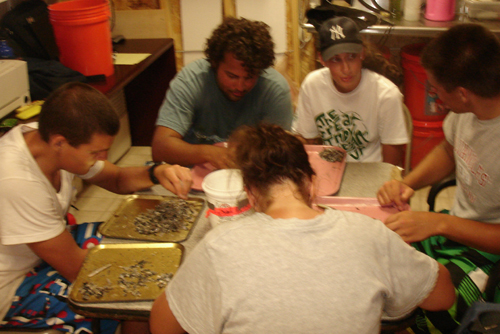
Students in the 2010 Field School sorting through dredge spoil
This dredge spoil, which is simply vast amounts of tiny broken shell fragments, is stored in labeled buckets with lids, and eventually we have volunteers sort through them. Because there are often dead, stinky things in the shell hash, and because usually there is nothing very interesting that turns up, it is not always a coveted job, and it takes a special kind of volunteer to undertake this tedious task. Yesterday we had a few volunteers sorting through dredge spoil that was collected from Unit 19 (where the two muskets were found this July, just south of the ship’s bell and cannons). Just an hour after starting to sort through a bucket load of shell bits, our volunteer Karen came up with a copper coin, about the size of a quarter but thinner. While quite worn and corroded, a face in profile can be made out, which we believe is meant to represent the British King George (see the top of this blog post). The other side of the coin is obscured and we may not be able to identify it until we clean it either chemically or through electrolysis. But we are excited that there could be a date on it!
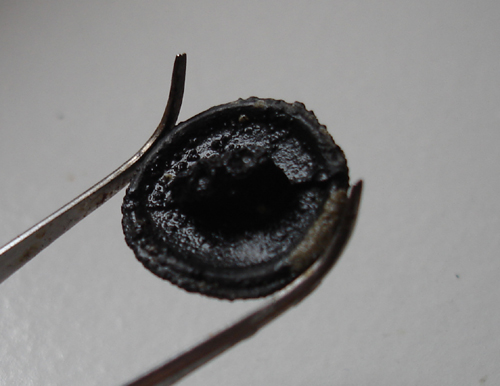
The back of the first button. The visible projection was the device by which it was once attached to clothing. The front of this pewter button appears plain, but cleaning may reveal an inscription or other decoration.
Later in the day, our volunteer Kyle came across two pewter buttons. One of these appears blank, though further electrolysis cleaning could reveal an inscription. It is about the same size as the Royal Provincial button we found earlier this year, and could possibly be another of this type.
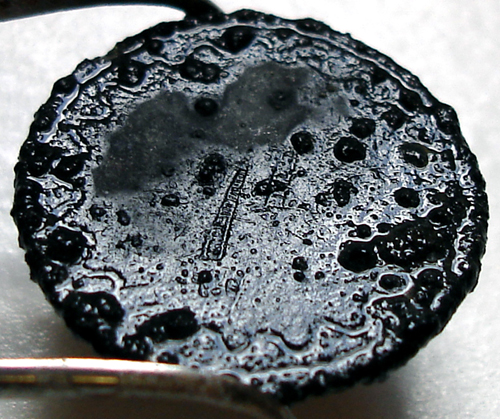
The smoking gun! This button, which appears to display the number 74 and therefore is from the British Army’s 71st Regiment, may be the indisputable proof that the Storm Wreck was involved with the British evacuation of Charleston at the end of the Revolutionary War.
The other one shows a zig-zag design around its perimeter, and in its center it appears to have the number 71. We believe this represents a British Army uniform, that of the 71st Regiment, which were Fraser’s Highlanders. We are still researching this regiment, which was assembled in Scotland and fought the rebels in North America, but after the Battle of Yorktown its remaining men were in Charleston and participated in the evacuation of Charleston in December 1782. This is very significant to us, as we have suspected that the Storm Wreck was that of one of sixteen refugee ships carrying Loyalist evacuees from Charleston to St. Augustine that were wrecked in December 1782. The presence of members of the 71st Regiment on the Storm Wreck, attested to by this button, is strong–and perhaps definitive–evidence that this vessel was participating in the evacuation.
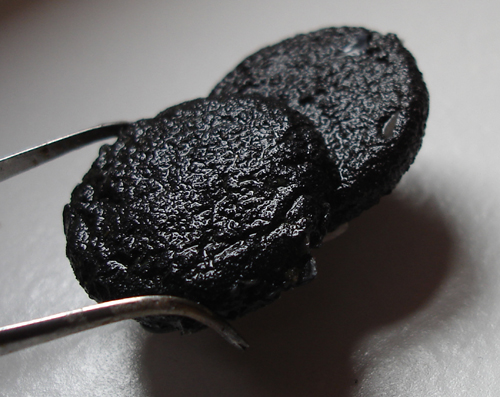
Finally, an hour or so later, Kyle discovered what appears to be two more coins. They are thicker than the first and might be silver, but we are not sure. They are more concreted and we cannot make out any markings on them at this time. It is also possible that this clump represents three or even four coins, as one of the disks appears to be actually two stuck together. If these are coins, they are much thicker than the copper coin pictured at the top of this blog entry, and smaller in diameter. They do look somewhat like the buttons, but they don’t have the projection on the interior surface like our other pewter buttons. So these are a bit more of a mystery, but perhaps one that will be solved soon. We are actually heading to Flagler Hospital later today, to do some x-raying of artifacts in their state-of-the-art CTscanner. We will probably include the double coin clump, so that we can perhaps better tell if these are indeed coins, and how many of them there are.
Stay tuned for more updates related to this amazing day of discovery!!!!
To learn more about the shipwreck, visit LAMP’s Storm Wreck webpage.
UPDATE: When originally found, the button was thought to be from the 74th Regiment, but we have definitively identified it as from the 71st Regiment, so this blog text was corrected.

